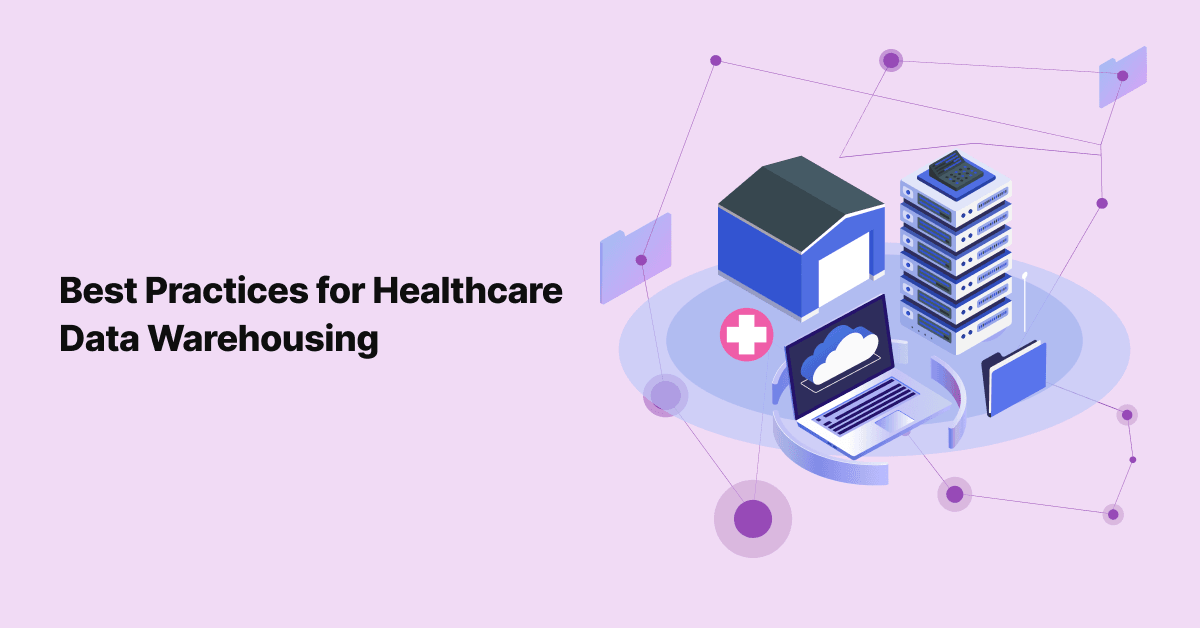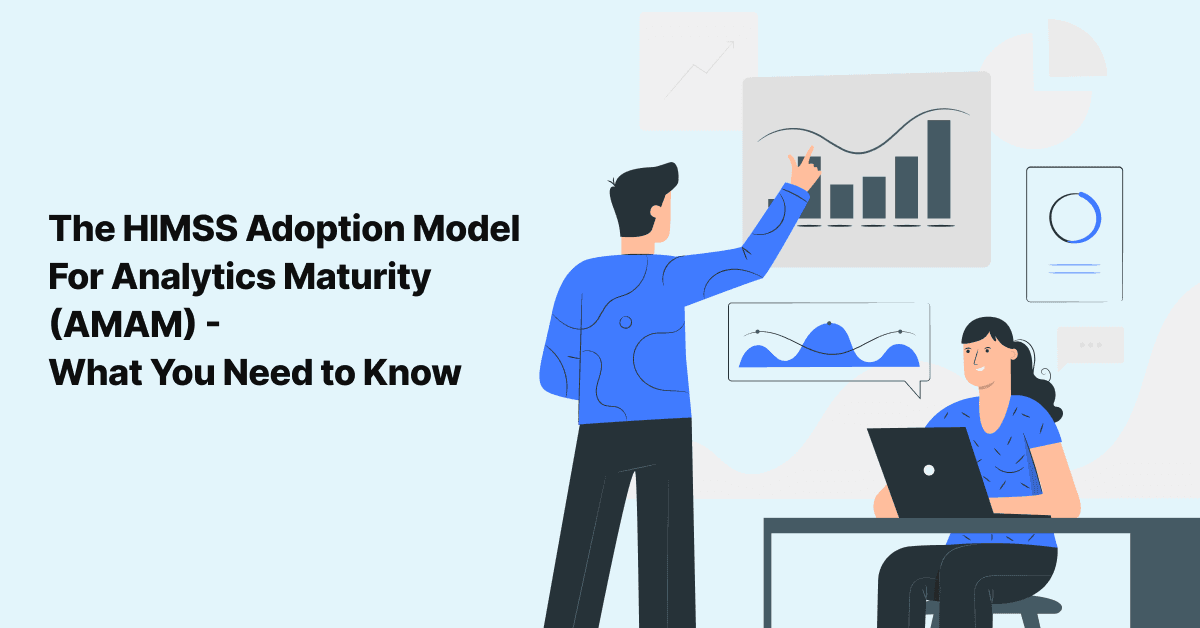
The List of Best Practices for Healthcare Data Warehousing
From Electronic Medical Records to billing information, healthcare organizations are collecting more data than …

As healthcare organizations seek to transform into technology-driven, data-rich entities, there is an increasing need for a comprehensive set of healthcare data models. Effective utilization of these healthcare data models can maximize efficiency within the health system and help identify new opportunities to optimize patient outcomes.
As a data leader, you know that having access to reliable, up-to-date information about patient care is essential for delivering high-quality and cost-effective medical services. By creating an enterprise framework for your health systems’ data assets and designing appropriate healthcare data models, it will enable key insights from large datasets across multiple sources leading to better decision-making in clinical care scenarios as well as population health initiatives.
In this blog post, we will explore some must-have healthcare data models that optimize the efficient use of your organization’s data while enabling maximum impact on the outcome.
The need for healthcare data to be accommodated in data models arises out of the lack of consistency in the representation of healthcare data. Paying particular attention to the representation and storing of healthcare data in an appropriate data model is of key importance because it plays a crucial role in the integration of data into a healthcare data platform.
Now let’s take a look at the two key kinds of healthcare data that any hospital or health system must deal with on a day-to-day basis and help you discover the most appropriate data model to accommodate them.
Clinical data is an invaluable tool for healthcare providers, providing them with important insights into patient safety and care programs. At its simplest level, clinical data helps inform decisions that are based on a patient’s unique history, current health condition, and risk factors. However, it has the potential to go much further. By using advanced analytics and regulatory standards, it can help uncover latent patterns in the data that reveal opportunities for improved services or strategies for addressing public health issues. Used wisely, it can also provide feedback to individual healthcare professionals about their practice changes and outcomes over time, ultimately leading to better outcomes for providers and their patients.
Clinical data is becoming more digital every day, so having a secure database to store them is of utmost importance. That’s where the FHIR® standard comes in. Short for Fast Healthcare Interoperability Resources, FHIR® is an open-source database that stores health information in digital formats such as lab results, patient data, medical histories, immunization dates, and virtually any other type of medical data imaginable. This secured database format supports the development of applications that can interact and share important patient insights from various digital channels like hospitals, laboratories, long-term care centers, and dispensaries quickly. With the added security features of the FHIR® protocol, which controls access to Protected Health Information (PHI), this database ensures patient data privacy while sharing crucial healthcare information among doctors or institutions with ease.
FHIR® is the best choice here because it helps represent clinical data in all its richness. Using an FHIR®-compliant data model for clinical data comes in very handy during healthcare data warehousing. One key benefit of using an FHIR®-compliant data model, as mentioned by Dr. Siv Raman in his recent Healthcare Data Warehousing Bootcamp, is its ability to easily integrate healthcare data from various EMRs that have their own representations of clinical data. Other benefits of using an FHIR®-compliant data model for clinical data are that it comes with excellent interoperability, improved care coordination, and, most importantly, is super easy to implement.
The choice of a particular data model also varies with the use case you have for your healthcare data. If you are on the lookout for research-focused use cases for your clinical data, you should consider the following data models.
i2b2 (Informatics for Integrating Biology and the Bedside) is an open-source data management system that was developed to support clinical research. It is designed to allow researchers to store, manage, and analyze data that is generated during the course of a clinical study. This innovative system enables data from multiple sources to be integrated and shared in an intuitive way. Furthermore, the i2b2 architecture includes a set of standards of exchange so that users across different organizations can easily access the stored information. The platform brings together data for numerous applications, such as tracking patient care, research analytics, and improving population health management. Despite its open-source nature, user activity on the database is highly secure and can only be accessed with confidentiality agreements in place. By providing such a reliable platform where researchers and clinicians can work together while respecting patient privacy, the i2b2 database shows how technology can support collaboration that drives positive scientific progress.
OMOP (Observational Medical Outcomes Partnership) is a standardized data model that was developed to support observational research using electronic healthcare data. It is a culmination of data sourced from Electronic Health Records that are used to aid research studies. By combining such clinical and economic outcome data, the insights gathered serve to improve the quality of care and patient outcomes. The advantage of using the OMOP database is that it allows researchers to evaluate drug efficacy, product utilization patterns and regulation, healthcare cost and resource allocation, comparative effectiveness analyses, and decision modeling. Thus making it an essential source for many researchers alike interested in exploring public health matters with greater accuracy.
Healthcare claims data is an incredibly valuable resource for providers and insurers alike. Patients’ data is collected and securely stored to let doctors track their patient’s health more easily so that they can deliver the best possible care. Not only does it grant access to a patient’s complete medical history, but it also provides up-to-date information about their medications and treatments - allowing healthcare providers to make informed decisions based on recent progress. Accurately tracking and analyzing this type of data offers useful insight into patterns related to provider performance, patient outcomes, and costs which ultimately informs strategies around spending, pricing, and population health management. Healthcare claims data may have an intimidating air of complexity, but if harnessed correctly, it can truly revolutionize the industry.
When thinking about the representation of claims data, one data model that immediately grabs attention is the FHIR Explanation of Benefit resource. It happens to be a logical combination that puts together Claim, ClaimResponse, and some Coverage accounting information of a single-payer for it to be used by a patient or subscriber. While the FHIR Explanation of Benefit resource represents claims data, there is one problem. This resource is not complete enough to handle all claims data, as it does not address all the attributes necessary to represent the full set of informational fields. It is for this reason that the 314e team suggests turning to the APCD models for claims data.
An All Payers Claims Database (APCD) is a comprehensive collection of healthcare data from a US state’s insurance companies, government programs, and other sources. Many, if not all, US states have mandated the submission of claims data by the state’s payers to its APCD effort. The file specifications for this submission are detailed by the state. Although each state has its own specification, they are quite close to each other and can be reconciled or combined easily.
An APCD-derived specification is an appropriate data model for claims data because it uses an open, transparent, and standardized model that allows for claims to be compared across different types of healthcare systems. This allows claims data to be stored in a standard format so that users can access and analyze these records more easily. This level of transparency also enables governments, private companies, and other stakeholders to keep healthcare costs down, better identify waste or fraud in the system, and provide actionable insights based on population health trends for cost savings initiatives. The APCD spec offers a more efficient way to track the use of funds in each payer system by giving researchers, providers, and patients insight into patient care from every angle, no matter their insurance coverage. Ultimately, the APCD model presents insights into healthcare emerging trends at both macro and micro levels for better decision-making power for all parties involved in the system.
As you can see, there are different data models for different purposes in a healthcare setting. Dr. Siv recommends that FHIR be primarily used for clinical data, i2b2 and OMOP typically for research, and APCD for claims data. If you are looking to get the most out of your healthcare data, it is important to choose the right model (or models) for your needs. Luckily, we have a team of experts who can help you select and implement the right data model (or models) for your health system.
Contact us today to get started!
Join over 3,200 subscribers and keep up-to-date with the latest innovations & best practices in Healthcare IT.

From Electronic Medical Records to billing information, healthcare organizations are collecting more data than …

In the digital era, healthcare organizations must effectively harness extensive data to enhance patient care, …

The healthcare sector is under constant obligation to meet regulatory requirements and demonstrate fiscal …